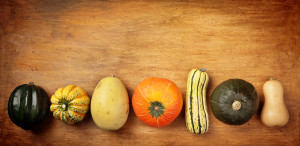Happy Autumn Equinox!
Fall or autumn is a transitional season where nature provides many metaphors for our own life. Today, September 23 is the autumn equinox also known as Mabon. The equinox is an astrological term marking the approximate day where daytime and nighttime is the same length. Mabon is a Pagan and Wiccan tradition celebrating the middle of the harvest and a moment where nature is in balance.
As the light wanes and darkness grows it is a season ripe for turning inward with the following themes:
- Gratitude: giving thanks for the harvest, the bounty the Earth provides, and the bounty of your body and mind. This is also a time for harvesting your best intentions and unique gifts.
- Letting go: just like the trees releasing their leaves, the fall is a time for letting go. This can be from old habits and patterns by choosing to adopt new ones that better serve you and your health.
- Reflection: self-care, meditation, journaling, and mindful eating are all practices to help you get quiet, tune in and reflect on the past energy of the summer and ready for the cold winter ahead.
- Transition: just like the seasons, we are constantly evolving. Spring is budding life, summer is growth, and fall brings the fleeting nature of life, transitioning into the dark, dormant winter only to be reborn again in spring. The darkness plays a role in your transformation of letting go since all things must die before they can be reborn.
- Structure: for many people autumn creates a structured schedule again as school starts and summer vacations end, this is the time to get back into your routine.
In holistic nutrition fall is time to eat more starches and root vegetables as it allows the body to store energy for the colder months ahead. Speaking in evolutionary terms our bodies are programmed to do this with the foods that were abundantly available during the fall (hearty root vegetables, starchy winter squashes and sugary fruit) as a response to the transitioning season.
Nature is so wise: the same foods that are abundant in the fall prep our bodies for the needs of winter, namely fighting off the flu.
My CSA keeps me in touch with the seasonal harvests. This time of year its:
- winter squashes – acorn, butternut, delicata, spaghetti squash and pumpkins
- potatoes – try the purple fingerlings
- broccoli & leafy greens – experience another growing season during cooler months
- apples & pears – fresh and delicious this time of year
 Winter squashes provide a load of beta carotene, an important antioxidant to neutralize free radicals. As a bonus, beta carotene converts into vitamin A in your body. Vitamin A is an important nutrient for the immune system to fight off infections in our mucus membranes, which line your sinuses, lungs, and digestive tract. Viruses, like the flu, first come into contact with your body through a mucus membrane. So shoring up the defenses with vitamin A is one good step for staying healthy this winter. Eat up your orange foods: squashes, pumpkins and carrots. For extra boost from straight vitamin A, that doesn’t need converting, switch up your fish oil to cod liver oil.
Winter squashes provide a load of beta carotene, an important antioxidant to neutralize free radicals. As a bonus, beta carotene converts into vitamin A in your body. Vitamin A is an important nutrient for the immune system to fight off infections in our mucus membranes, which line your sinuses, lungs, and digestive tract. Viruses, like the flu, first come into contact with your body through a mucus membrane. So shoring up the defenses with vitamin A is one good step for staying healthy this winter. Eat up your orange foods: squashes, pumpkins and carrots. For extra boost from straight vitamin A, that doesn’t need converting, switch up your fish oil to cod liver oil.
Another way to fight off the flu is by strengthening your microbiome, the trillions of organisms that live inside your body, mostly in your gut. These buggers protect the lining of the GI tract so invaders cannot get in (ie: the insidious flu virus), work hand in hand with your immune system to fight off invaders, and control inflammation so you don’t feel sick if a war is being waged. We ALL come into contact with the flu, but if your immune system and friendly microbiome are strong enough to fight it off you won’t feel a thing. Starchy vegetables, especially potatoes provide a certain type of starch that feeds the microbiome so they can stay healthy and perform their jobs. Cold potatoes specifically provide this starch. So while it’s still warm out, whip up a batch of potato salad and eat it cold for a dose of healthy resistant starch.
This recipe is a super simple way to enjoy butternut squash. Try it for breakfast with a couple of turkey sausages.
Roasted Butternut Squash and Sage
1 large butternut squash
2-3 TBSP of fresh sage, minced
3-4 TBSP coconut oil
- Carefully slice the outer rind off of the squash
- Once skinless, scoop out the seeds, then cut into small cubes
- Place cubes in large roasting pan with coconut oil
- Place in 350 degree pre-heated oven for 5 minutes
- Take out of oven and stir to spread the melted coconut oil
- Add chopped sage and stir
- Bake for another 30-45 minutes
Happy Fall!
Disclaimer: Nutrition therapy is not intended as a diagnosis, treatment, prescription, or cure for any disease, or as a substitute for medical care. Jen Marshall and Stacy St Germain are not licensed medical providers. Nutrition plans are not intended as a substitution for traditional medical care, nor should be interpreted as medical advice, but instead is an adjunctive and supportive therapy.
